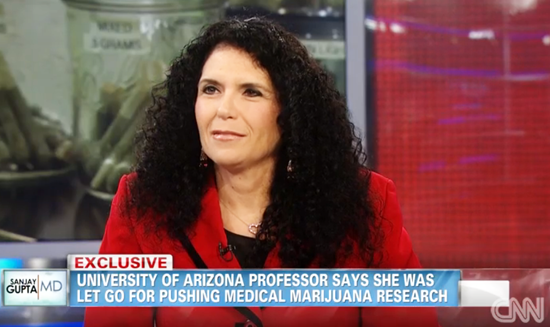
By Ray Stern | Phoenix New Times
Sue Sisley, M.D., is nearly blind.
She can’t see out of her left eye and has minimal vision in her right, resulting from amblyopia, a condition she’s had since birth. Her remaining eyesight “doesn’t seem to be deteriorating further,” she says. But in recent months, Sisley’s been trying to train Penny, a rescue dog from the Humane Society, for her potentially to use someday. It’s not really working out. Cute but undisciplined, Penny — wearing a blue vest — greets a visitor excitedly at the Arizona Telemedicine Program’s Phoenix office.
On this Tuesday afternoon, 45-year-old Sisley is the only person working in the facility. She’s got back-to-back video meetings with patients but takes a break to meet with a reporter, after a weeks-long stampede of attention from the news media.
Sisley’s served on the telemedicine program’s executive committee as associate director of interprofessional education, a part-time position, since 2007. The facility, in a wing of the University of Arizona’s Phoenix campus at 550 East Van Buren, is one of the regional hubs for the high-tech program and one of the most highly touted divisions of the Tucson-based university’s College of Medicine. From the center, as with other hubs in Flagstaff and Tucson, physicians such as Sisley consult with patients using video cameras and such high-tech instruments as digital stethoscopes, and they conduct various doctor-education programs.








